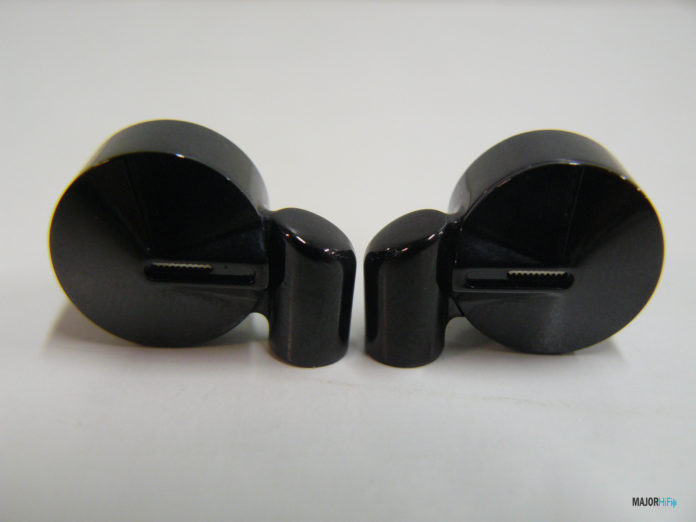I was very excited when the new DUNU ZEN was announced back in December. The prospect of a pure beryllium foil dynamic driver system would intrigue any audiophile, and the new ECLIPSE technology is exciting. You would think such an impressive construction would merit a pretty penny, but the ZEN is actually priced at a very reasonable $699. The Luna made a big impression on people so I’m looking forward to seeing how DUNU has evolved this tech further. Getting my hands on the ZEN feels like something special, and I can’t wait to dive right into them.
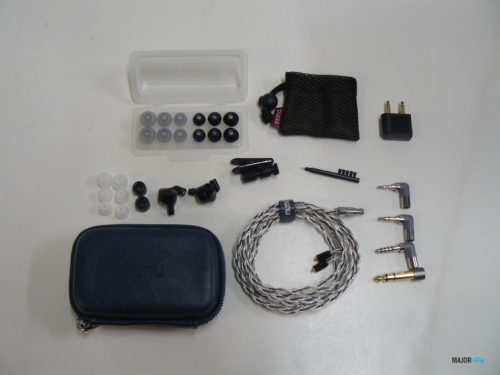
What You Get
Everything about the ZEN’s packaging prepares you for its elegance, with a neat organization and a hefty variety of accessories. You know you’re getting something special when you first open the box and see a fancy “Designed by insert brand name here.” The DUW-03 cable and IEMs are the first items that greet you. This stock cable is 8-core and uses silver-plated copper with an MMCX connector. With the ZEN, it’s all about options, as both the selection of adapters and ear tips is more plentiful than a lot of IEMs I’ve seen. Removing the first layer of padding reveals many different contents.
The first thing that stuck out to me was obviously the row of three separate adapters. You’ll see 2.5mm, 3.5mm, and 4.4mm adapters supplied here, as well as a quarter-inch adapter, hiding in the ZENs storage case along with an airplane adapter. In a separate container, an array of 6 pairs of ear tips are laid out nicely. This is already a nice assortment, but the tip selection doesn’t end there. Inside the storage case, which reminds me of the quality of Campfire Audio’s pouches, contains three more pairs of white silicone tips and one extra pair of foam tips.
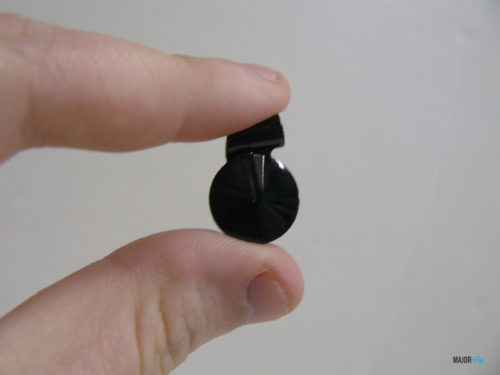
Look and Feel
I was impressed with how they looked from the press photos, but actually holding the ZEN, and seeing it in person is a whole different story. My initial impression was that they were smaller than I had expected, but this was an aspect I was happy with. The sleek black stainless steel housing is absolutely dynamite, and the structure of it all into this single solid circular piece is some excellent craftsmanship. Holding the earpieces in my hands the ZEN has a noticeable weight to them. This must be a combination of the housing and that ECLIPSE driver system, which features special magnets that we’ll get into. I also want to mention the cable, which also has a particularly eye-catching design. It uses this thick braiding encrusted in black and white which gives the ZEN such a unique aesthetic.
As for the fit, the ZEN offers an ideal level of comfort for an IEM. The housing is a perfect size, and it makes the ear tip selection very useful. The spout comes out far enough so that the ear tips can envelop enough space to properly add security and comfortability. The earloops might be thick, but they were never distracting. I preferred the larger silicone tips for the best balance of comfort and security.
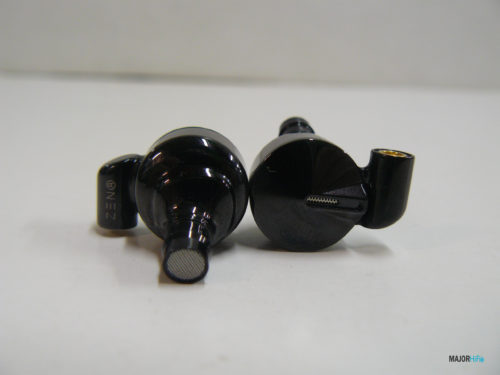
Design
Let’s dig right into that Eclipse driver and why it’s such a big deal that they gave it a backward E. For starters, this is a 13.5mm driver system, which in terms of size rivals that of some of the biggest flagship IEMs today. A driver like this already houses a lot of potential, but the Eclipse doesn’t stop there. Its diaphragm uses a magnesium alloy dome with a nanoDLC carbon coating and a W-shaped morphology for a fully independent suspension surround. Because of the carbon coating, the strength of the diaphragm is augmented greatly. Mixed with a few other hyper-specific chemical techniques, DUNU aims to create a pure reproduction of sound.
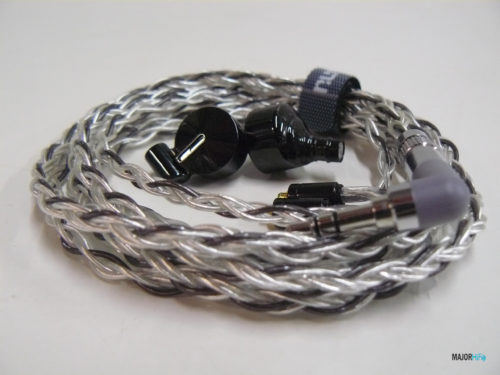
Output
Although it’s super technical makeup might assume more limited accessibility options, the ZEN should provide a solid output quality to most systems. With an impedance of 16 Ohms, you won’t have too heavy of a resistance, so volume should be distributed naturally whether you’re using a high-end DAP, DAC/AMP, or standard 3.5mm headphone jack on a smartphone or laptop. You should also notice plenty of headroom between your comfortable, nominal volume level and the highest volume your system can play, making for a more versatile, and most importantly safe listening experience.
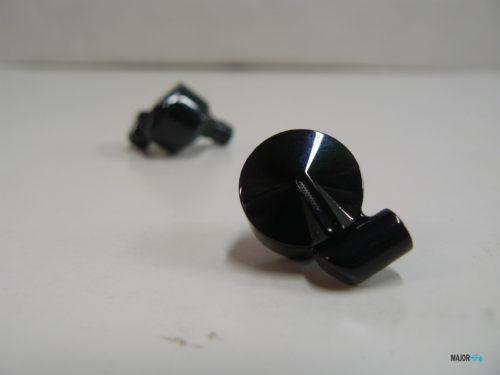
Soundstage
If you’ve read a lot of my reviews here, you’ll know that I am a sucker for a good soundstage. It’s rare that I find a truly great one on an IEM, but the ZEN really takes the cake here. The stereo field is presented as having a considerable amount of width, with pan movements and positioning being respected and accurate. Instruments and effects that are panned to the extreme left or right placements appear as they extend well past the outer shell of the earpiece. However, what makes this stage special is its sense of depth.
The many layers exhibited here are clear and extend the ZEN’s impression of immersion. It creates an engaging sound space that’s easy to get lost in. The quality might not be immediately apparent, but the more tracks I tested the more I realized what a grip the stage had on me. Tracks with heavy string ensembles appeared distinct and properly elegant, while lush ambient soundscapes were captured with precision. The presentation of the image is excellent on the ZEN and properly showcases its best qualities.
Low End
The bass frequencies offer up a solid impactful response and blend an ideal balance between detail and fun. The fun part is the punchy nature of some frequency bands and the detail part being how well the bass resonates in the soundstage. Low-end drones have some noticeable meat, with rich textures and spaciousness, while instruments like bass strings provide that extra bit of clarity. These frequencies are presented in balance with the rest of the sound signature and never become bleedy, or overbearing.
Mids
Midrange elements are produced with an excellent level of detail and clarity. The low and fundamental mids appear full and balanced while the high-mids receive some nice textures that help lift the sound signature to a finer degree of expression. Elements like vocals, harmonies, and brass instruments are reproduced remarkably well and are given a lot of freedom to exhibit their true fullness. The powerful performances of Fiona Apple or Joanna Newsom ended up being ideal for my testing of the ZEN, as their vocals resonated with crisp resolution adding to the emotional weight of the tracks.
Highs
I found the treble to be a bit of a chameleon. Sometimes I thought that the highs were a little too flat, but in others, they were pushed forward and given a lot more energy. With film scores and jazz, the highs showcased some pleasant brightness, but in some rock and electronic tracks, they were more smoothed out. The most consistent part about the highs is that they always had a sweet sparkly texture that I found enjoyable through most tracks. They’re just missing that extra airiness that would push the ZEN to greater status in my eyes.
Summary
When I first laid my eyes on the ZEN I could only imagine what they would sound like, and now that I know I couldn’t be happier. Not only do the ZEN look great, but its soundstage and detail retrieval are incredible for the price range, and rival that of more expensive models. They’re led by a top-notch driver system that sparks innovation in the IEM game, and I’m excited to see how DUNU develops this tech going forward. For an IEM of less than a thousand, I couldn’t recommend it enough.
Pros and Cons
Pros: Soundstage, fit, design, bass impact, midrange clarity
Cons: Treble can be a mixed bag
Specs
| Driver | Dynamic driver with Magnesium alloy pure metal diaphragm |
| Frequency Response | 5-40000Hz |
| Impedance | 16 Ohms |
| Sensitivity | 108dB/mW |
| Type | In-ear/metal |
| Cable | 8-core OOC Silver-plated |
| Cable Length | 1.2m |
| Connector | MMCX |
| Plug Connector | Patented DUNU Quick-Switch Modular Plug System |
| Included Plug Terminations | 4.4 mm TRRS Balanced, 3.5 mm TRS Single-Ended, 2.5 mm TRRS Balanced |
The DUNU ZEN is available at Audio 46.
MAJORHIFI may get a commission from retail offers.
MAJORHIFI may receive commissions from retail offers.


